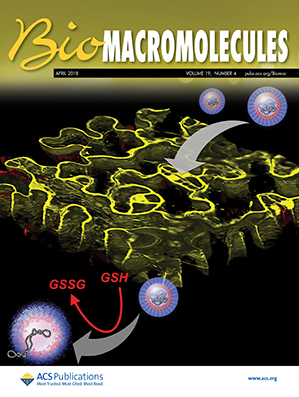端粒g -四聚体多聚物的聚合性质:化学惰性聚合剂的影响。
IF 5.4
2区 化学
Q1 BIOCHEMISTRY & MOLECULAR BIOLOGY
引用次数: 0
摘要
g -四联体是人类基因组中普遍存在的非规范DNA结构,被认为在大多数癌症的发展中起着至关重要的作用。在这里,我们提出了一种新的粗粒度方法来建模g -四复体,该方法考虑了它们的结构灵活性。我们将其应用于研究g -四聚体多聚体的聚合特性,在有和没有拥挤分子的情况下模拟体内条件。我们发现,与文献中发现的一些建议相反,长g -四聚体多聚体是相当灵活的聚合物大分子,具有与单体尺寸相当的局部持续长度,在良好溶剂中表现出与真实聚合物一致的链刚度变化曲线。此外,在拥挤的环境中(高达10%的体积分数),我们报告说,g -四重多聚体表现出增加的卷曲倾向,与相应的降低测量链的刚度。本文章由计算机程序翻译,如有差异,请以英文原文为准。



Polymeric Properties of Telomeric G‑Quadruplex Multimers: Effects of Chemically Inert Crowders
G-quadruplexes are noncanonical DNA structures rather ubiquitous in the human genome, which are thought to play a crucial role in the development of the majority of cancers. Here, we present a novel coarse-grained approach in modeling G-quadruplexes that accounts for their structural flexibility. We apply it to study the polymeric properties of G-quadruplex multimers, with and without crowder molecules, to mimic in vivo conditions. We find that, contrary to some suggestions found in the literature, long G-quadruplex multimers are rather flexible polymeric macromolecules, with a local persistence length comparable to monomer size, exhibiting a chain stiffness variation profile consistent with a real polymer in good solvent. Moreover, in a crowded environment (up to 10% volume fraction), we report that G-quadruplex multimers exhibit an increased propensity for coiling, with a corresponding decrease in the measured chain stiffness.
- Download: Download high-res image (121KB)
- Download: Download full-size image
求助全文
通过发布文献求助,成功后即可免费获取论文全文。
去求助
来源期刊

Biomacromolecules
化学-高分子科学
CiteScore
10.60
自引率
4.80%
发文量
417
审稿时长
1.6 months
期刊介绍:
Biomacromolecules is a leading forum for the dissemination of cutting-edge research at the interface of polymer science and biology. Submissions to Biomacromolecules should contain strong elements of innovation in terms of macromolecular design, synthesis and characterization, or in the application of polymer materials to biology and medicine.
Topics covered by Biomacromolecules include, but are not exclusively limited to: sustainable polymers, polymers based on natural and renewable resources, degradable polymers, polymer conjugates, polymeric drugs, polymers in biocatalysis, biomacromolecular assembly, biomimetic polymers, polymer-biomineral hybrids, biomimetic-polymer processing, polymer recycling, bioactive polymer surfaces, original polymer design for biomedical applications such as immunotherapy, drug delivery, gene delivery, antimicrobial applications, diagnostic imaging and biosensing, polymers in tissue engineering and regenerative medicine, polymeric scaffolds and hydrogels for cell culture and delivery.
 求助内容:
求助内容: 应助结果提醒方式:
应助结果提醒方式:


